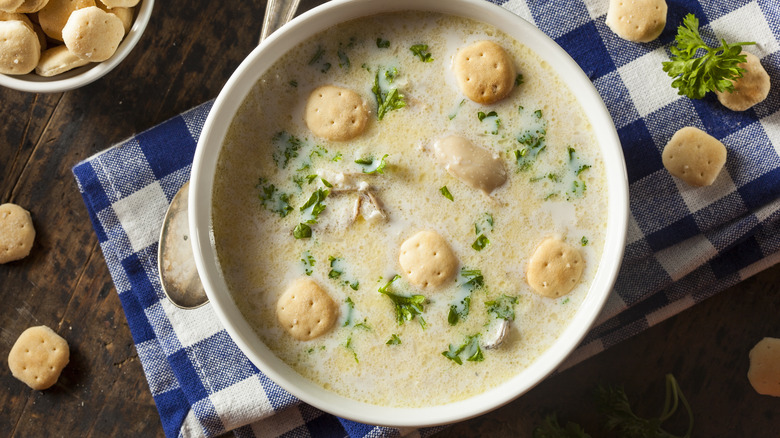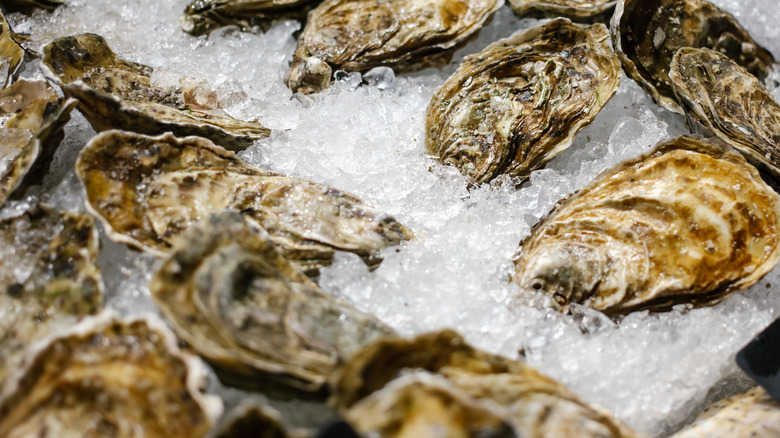Why Oyster Stew Is Eaten On Christmas Eve
Oyster stew is a Christmas Eve tradition for many Americans in certain parts of the country, but have you ever wondered how it made its way onto your dinner table? The credit for this rich and creamy dish (which uses oysters, milk, butter, and onions at its simplest) belongs to Irish immigrants, who brought their customs and traditions with them when they came over to the United States looking for a better life in the mid-19th century. Many of them were Catholic, and if you know anything about this religion, then you know Catholics traditionally abstain from meat on Fridays and during certain times before holidays, including Christmas Eve. In place of beef, pork, or chicken, they eat fish or vegetarian options.
Stew is a hearty, warm soup that is easy to assemble and substantial enough to satiate an empty tummy. The Irish would traditionally use a fish called ling, which is part of the cod family, to make a stew to feast on when Friday came around. However, ling was not readily available in America, so a substitute was needed to make their seafood stew. Enter the oyster. These shellfish were available in vast quantities and were relatively inexpensive, making them a win-win substitution.
Serve it with crackers
If you are going to whip up a pot of oyster stew for your Christmas Eve gathering, you should know that it is traditionally served with crackers — often saltines or the eponymous oyster crackers. You can buy a box at the grocery store or, if you want to be truly fancy, you can make your own. It's not difficult, and you can add a special touch with herbs and other seasoning blends that will make your taste buds sing.
If crackers seem too pedestrian for your feast, buy a nice crusty loaf of French bread, a chewy baguette, or even a tangy sourdough to nosh on alongside your oyster stew. You can use it to sop up any flavorful broth left in your bowl to make sure it doesn't go to waste. But, if you are looking to create more of a soup and salad combo, oyster stew pairs well with a salad comprised of leafy winter greens, like kale, chard, or rapini. You can top them with a simple vinaigrette that incorporates apples or pears to bring it all together.
Growing beyond the dish's roots
The fact that we still eat this dish today speaks volumes about its taste. Those briny shellfish bathing in creamy milk and onions and seasoned with a little salt and pepper are quite flavorful. But, if you are going to cook oyster stew, certain months are better than others. In the past, oysters were only eaten safely in the colder months, meaning the dish tended to generally be prepared during the fall and winter. However, oysters are available year-round, so if you want to eat this dish beyond Christmas Eve, you can.
Oyster stew may seem intimidating to make, but it is actually pretty easy. The most important thing to remember is to not let the milk burn as it will really hamper the taste of your stew. And, if you don't want to deal with fresh oysters, don't be afraid to use canned. As long as they are packed in water, they will work just fine. Additionally, don't be afraid to add ingredients to enhance the flavor and make your Christmas Eve oyster stew your own. Bacon, with all of its beautiful savory, sweet, and smoky elements, is a perfect addition. Or, add some chopped fennel, carrots, potatoes, celery, or herbs to really make it pop.


